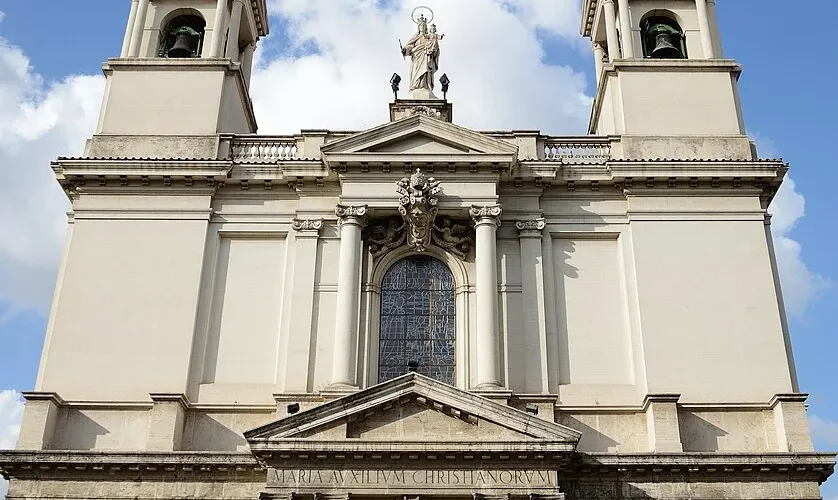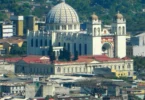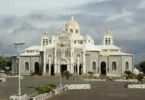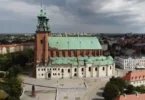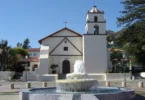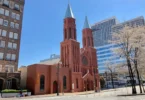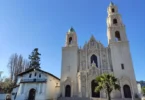Introduction
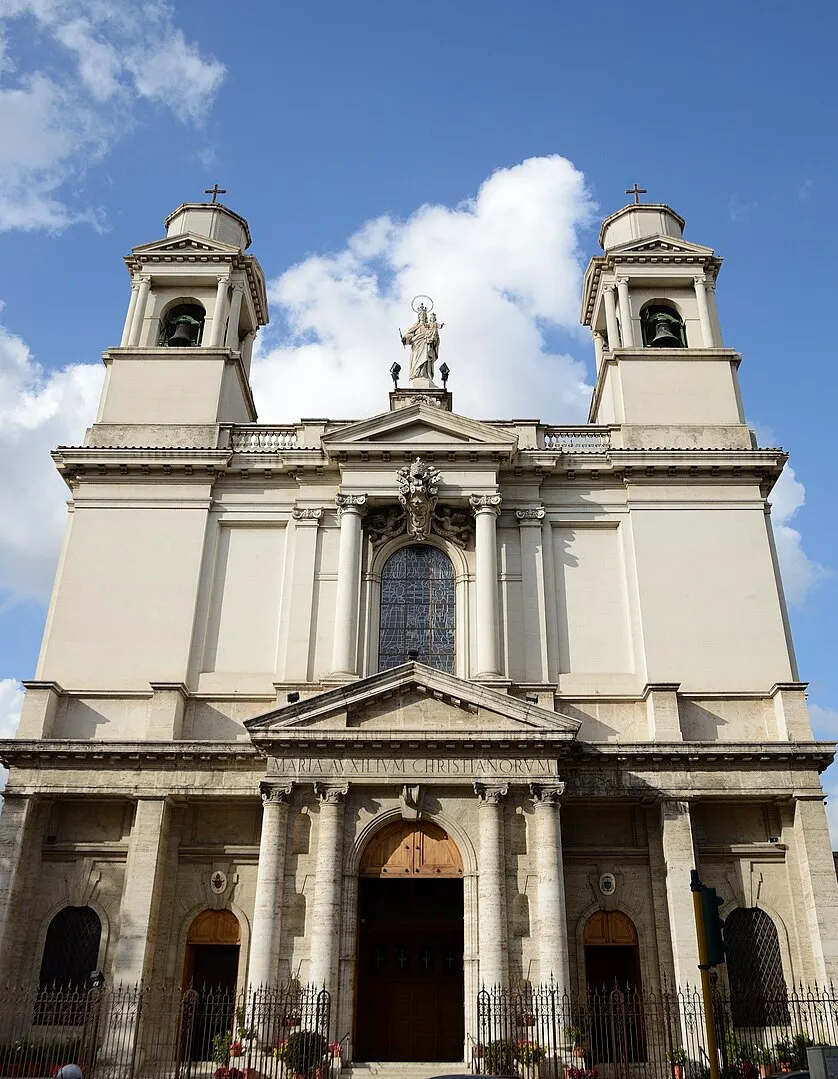
The Basilica of Santa Maria Ausiliatrice (Latin: Sancta Mariae Auxiliatricis Christianorum in via Tusculana) is a Roman Catholic Marian shrine, titular church, and minor basilica located in the Tuscolano district of Rome, within the urban area of Furio Camillo, at the square of the same name.
Established as a titular church by Pope Paul VI on 7 June 1967 through the Apostolic Constitution Ad Gubernacula Christianæ, it was later elevated to the status of a minor basilica by the Pontifical Decree Dulcia Christi Verba on 1 April 1969.
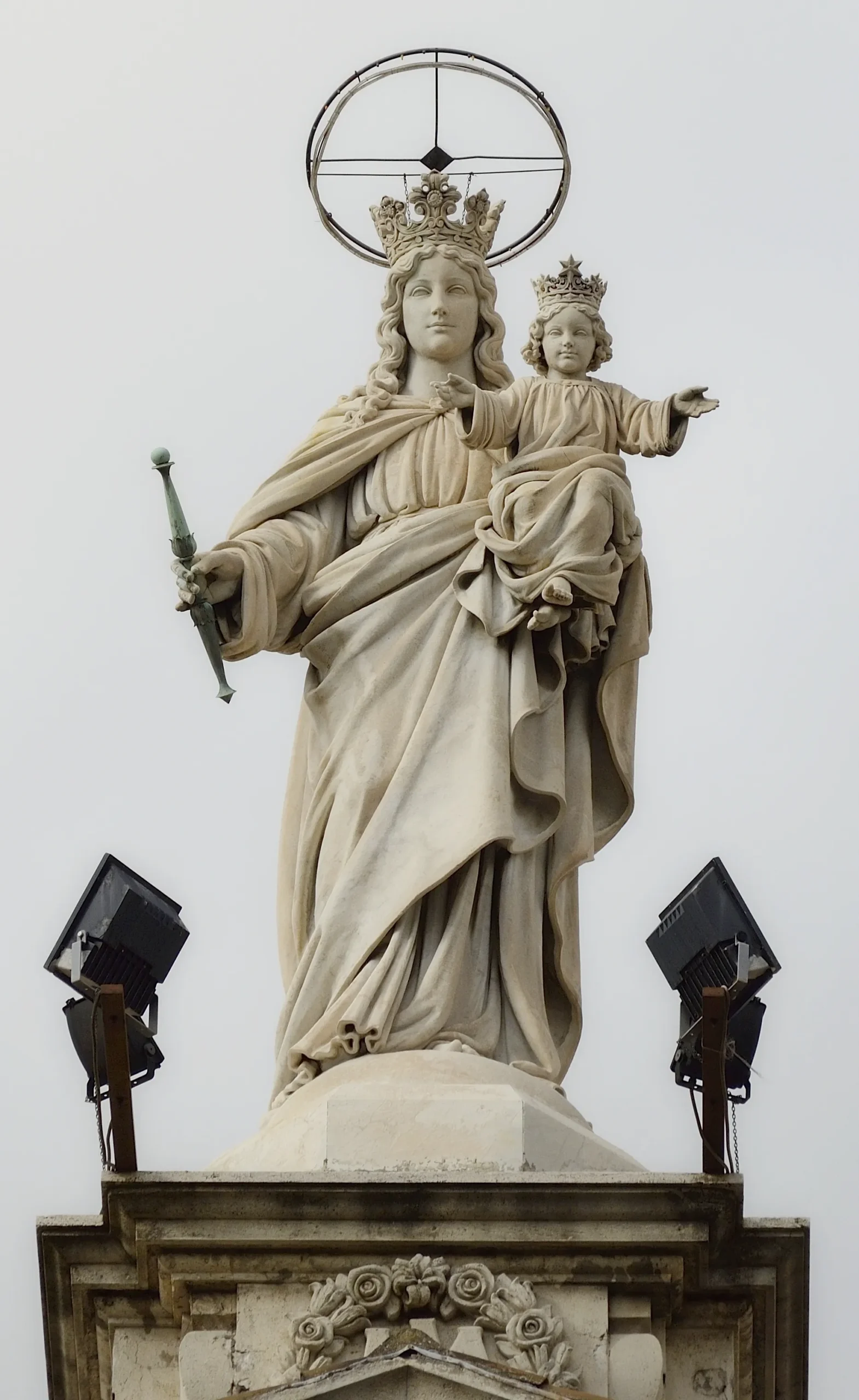
The Basilica of Santa Maria Ausiliatrice in Rome, located in the Tuscolano district near the Furio Camillo area, has a rich history rooted in the Catholic Church’s devotion to the Virgin Mary. The basilica was established as a parish on 25 March 1932 by Pope Pius XI through the Apostolic Constitution Inter Pastoralis. This decree entrusted the parish to the Salesians of Don Bosco, a religious institute known for its strong focus on education, youth ministry, and Marian devotion.
The construction of the basilica took place between 1931 and 1936, designed by the renowned Italian architects Nicola Mosso and Giulio Vallotti. The architectural style reflects the grandeur typical of early 20th-century religious structures, with elements that blend traditional Catholic design with the emerging modern architectural trends of the time.
The consecration ceremony of the basilica occurred on 17 May 1936. The morning Mass was presided over by Cardinal Francesco Marchetti Selvaggiani, who served as the vicar general of the Diocese of Rome. In the afternoon, the ceremony was led by Cardinal Eugenio Pacelli, who at that time was the Secretary of State for the Vatican and would later become Pope Pius XII. This dual consecration highlighted the significance of the basilica within the Church and its close ties to the Vatican’s leadership.
The basilica’s first parish priest was Don Salvatore Rotolo (1881–1969), a devoted Salesian priest who played a pivotal role in the parish’s early development. Rotolo later became the titular bishop of Nazianzo and served as an auxiliary bishop of Velletri. He also held the position of prelate nullius of Altamura and Acquaviva delle Fonti, overseeing ecclesiastical affairs in these regions. Don Salvatore Rotolo’s contributions to the Church were significant, and he is buried within the basilica, resting in a place of honor as a testament to his lifelong dedication.
In 1967, the basilica was elevated to the status of a cardinal titular church, known as Santa Maria Ausiliatrice in via Tusculana, reflecting its growing importance within the Catholic Church hierarchy. This designation allowed it to be associated with a cardinal, symbolizing its prestigious status.
Finally, in April 1969, the basilica was granted the dignity of a minor basilica by the Pope through the Pontifical Decree Dulcia Christi Verba. This title is reserved for churches that are of particular historical, architectural, or spiritual significance within the Catholic Church. The basilica continues to be a vibrant center of worship, reflecting both its rich history and its ongoing mission as a beacon of Marian devotion and faith in Rome.
Architecture of Basilica of Saint Mary Help of Christians, Rome, Italy
Architects: Nicola Mosso, Giulio Valotti.
Exterior
The façade of the Basilica of Santa Maria Ausiliatrice is an impressive architectural structure divided into two orders. The lower order features four columns supporting an architrave and a tympanum, which crown the main entrance of the temple. The upper order mirrors this grandeur, though with two columns instead of four, and instead of a door, there is a large window that adds to the monumentality of the façade. The entire structure is crowned with a balustrade, at the center of which stands a striking statue of the Madonna and Child, representing Mary Help of Christians. Flanking the façade are two bell towers, each housing a set of eight bells that chime across the neighborhood.
Interior
Inside, the basilica’s layout is a harmonious blend of Latin and Greek cross designs, creating a spacious and sacred atmosphere with three naves. The walls and ceiling are adorned with Baroque-inspired frescoes painted by Giuseppe Melle between 1957 and 1965. Melle, known for his theological insight as well as his artistic prowess, infused the basilica with profound religious themes, reflected in cycles dedicated to Marian devotion, the Church, the Eucharist, and the Salesian mission.
The dome is a masterpiece, depicting angels surrounding the Virgin of the Assumption, while the drum of the dome illustrates biblical episodes and the Marian dogmas. The central basin portrays the sovereignty of the Blessed Virgin Mary over angels and humanity, with the apostles and evangelists prominently displayed, followed by martyrs, confessors, and bishops. Melle’s work reflects Don Bosco’s spiritual vision, capturing the essence of Salesian thought more effectively than previous attempts, even drawing inspiration from Renaissance masterpieces like “The Dispute over the Blessed Sacrament” and “The School of Athens” by Raphael.
At the heart of the basilica stands the statue of Mary Help of Christians, adorned with crowns and a scepter blessed by Pope Paul VI on December 5, 1965, marking the conclusion of the Second Vatican Council.
Presbytery and Side Chapels
The vault of the presbytery, aligned with the renovated high altar, depicts the sacrifice of the Mass, as described in the Roman Canon: “Let this offering be carried by the hands of your holy angel to the altar of heaven before your divine Majesty.” The main vault also features symbols of victory, such as the battles of Lepanto (1571) and Vienna (1683), attributed to Mary’s intercession. Along the sides are representations of the Salesian mission, including educational endeavors and Marian sanctuaries.
The six side chapels each feature a Eucharistic cycle. The lunettes portray the action of the Holy Trinity in the sacrifice of the Son during the Mass, while the vaults display Old Testament scenes foreshadowing this sacrifice, including the Souls in Purgatory, the Paschal Lamb’s blood, the sacrifice of Isaac, the bread of Elijah, the sacrifice of Melchizedek, and the manna in the desert.
Chapel of St. John Bosco and Chapel of St. Joseph
To the left of the transept lies the Chapel of St. John Bosco, where the vault features a heartfelt depiction of the “Salve Regina.” Here, Don Bosco prays for Mary to reveal Jesus to us after this life. Beneath the trompe l’oeil dome, Melle illustrates scenes of suffering, illness, and the First World War, reflecting life’s trials and the hope offered through faith.
On the opposite side is the Chapel of St. Joseph, where the patron saint of the Catholic Church is depicted leaning on the head of the Child Jesus, blessing the faithful. The Virgin Mary, in a posture of prayer, encourages devotion with the words, “Go to Joseph.” The dome features contemporary Church scenes, including the ecumenical embrace between Paul VI and Athenagoras, alongside symbols of the ongoing Second Vatican Council.
Oratory of the Pio XI Institute
Adjacent to the basilica is the Oratory of the Pio XI Institute, established in 1928 to support the growth of new professional schools. This dynamic space, reflecting Don Bosco’s educational philosophy, includes classrooms for catechesis, laboratories, and a spacious courtyard surrounded by porticoes and synthetic grass soccer fields.
Don Bosco envisioned every Salesian work as a house that welcomes, a parish that evangelizes, a school that educates for life, and a courtyard where young people can meet and form friendships. The oratory serves as a lively environment where play is not just recreation but an essential part of holistic development.
The activities here are designed to nurture the integral formation of young people, following Don Bosco’s teachings. Programs include training groups, sports activities organized by the Polisportiva Giovanile Salesiana Flipper, musical and singing clubs, Sunday workshops, summer and winter camps, and after-school services. The oratory fosters a family spirit, promoting joyful interactions between Salesians, educators, children, and parents.
Feasts and Processions
The basilica’s vibrant spiritual life culminates annually on May 24th, celebrating the feast of the Blessed Virgin Mary Help of Christians. This occasion features a lively procession through the surrounding neighborhood, accompanied by festive stalls and attractions along Via Tuscolana, bringing the community together in a spirit of faith and celebration.
Feast Day
Feast Day : 24th May
The Basilica of Saint Mary Help of Christians in Rome, Italy, celebrates its feast day on May 24th. This day honors the Blessed Virgin Mary under the title “Help of Christians” (Maria Ausiliatrice), a devotion deeply rooted in the Salesian tradition founded by Saint John Bosco. The feast is marked by a grand procession, vibrant celebrations, and various festive activities, especially along Via Tuscolana, where the basilica is located.
Church Mass Timing
Monday : 7:00 AM , 8:00 AM , 9:00 AM , 6:30 PM
Tuesday : 7:00 AM , 8:00 AM , 9:00 AM , 6:30 PM
Wednesday : 7:00 AM , 8:00 AM , 9:00 AM , 6:30 PM
Thursday : 7:00 AM , 8:00 AM , 9:00 AM , 6:30 PM
Friday : 7:00 AM , 8:00 AM , 9:00 AM , 6:30 PM
Saturday : 7:00 AM , 8:30 AM , 10:00 AM , 11:30 AM , 6:30 PM , 8:00 PM
Sunday : 7:00 AM , 8:30 AM , 10:00 AM , 11:30 AM , 6:30 PM , 8:00 PM
Church Opening Time:
Monday : 6:45 am – 12:00 pm, 5:00 pm – 7:30 pm
Tuesday : 6:45 am – 12:00 pm, 5:00 pm – 7:30 pm
Wednesday : 6:45 am – 12:00 pm, 5:00 pm – 7:30 pm
Thursday : 6:45 am – 12:00 pm, 5:00 pm – 7:30 pm
Friday : 6:45 am – 12:00 pm, 5:00 pm – 7:30 pm
Saturday : 6:45 am – 12:00 pm, 5:00 pm – 7:30 pm
Sunday : 6:45 am – 12:00 pm, 5:00 pm – 7:30 pm
Contact Info
Address:
Basilica of Saint Mary Help of Christians
Piazza di Santa Maria Ausiliatrice, 54, 00181 Roma RM, Italy.
Phone : +39067827892
Accommodations
Connectivities
Airway
International Airport (Fiumicino Airport) to Basilica of Saint Mary Help of Christians, Rome, Italy distance between 38 min (38.1 km) via A91 and A90/E80.
Railway
Roma Termini Station to Basilica of Saint Mary Help of Christians, Rome, Italy distance between 3 min (700.0 m) via Via Rattazzi and Via Carlo Alberto.

